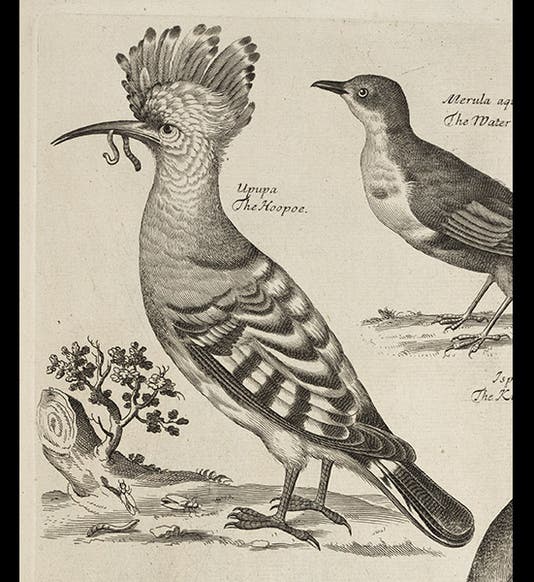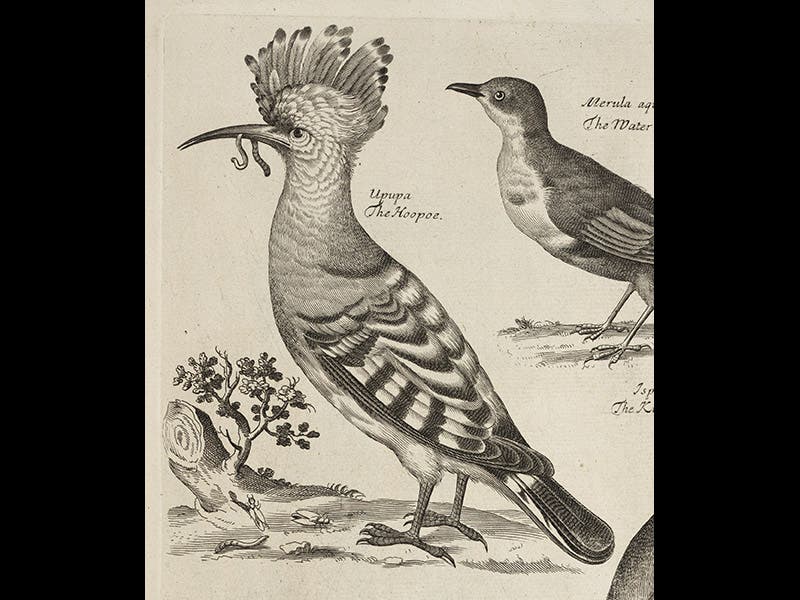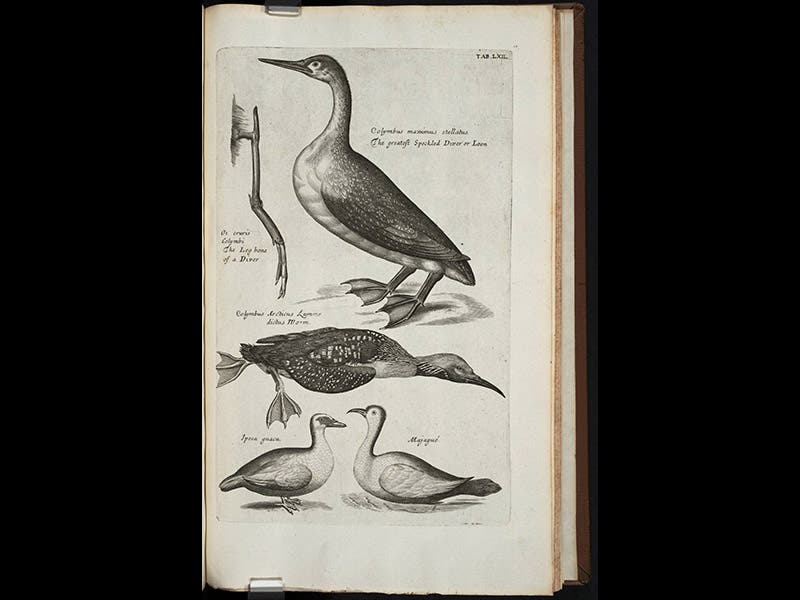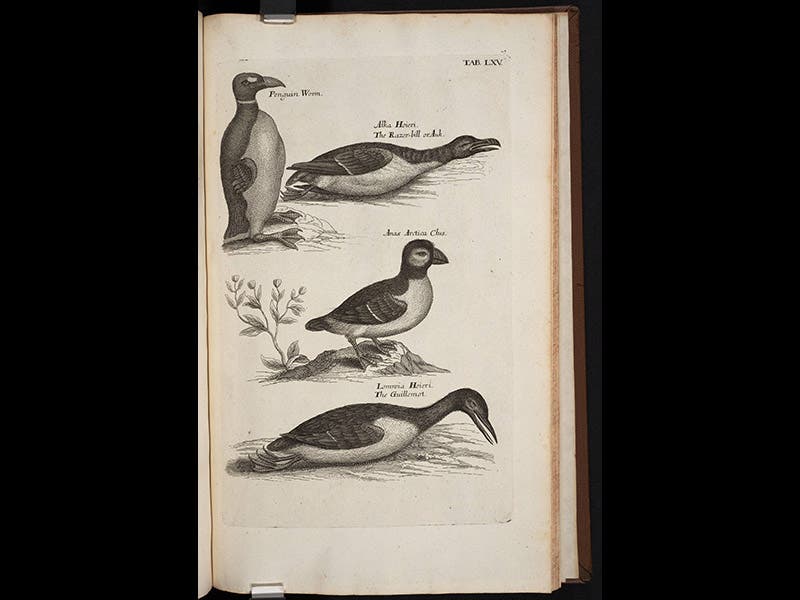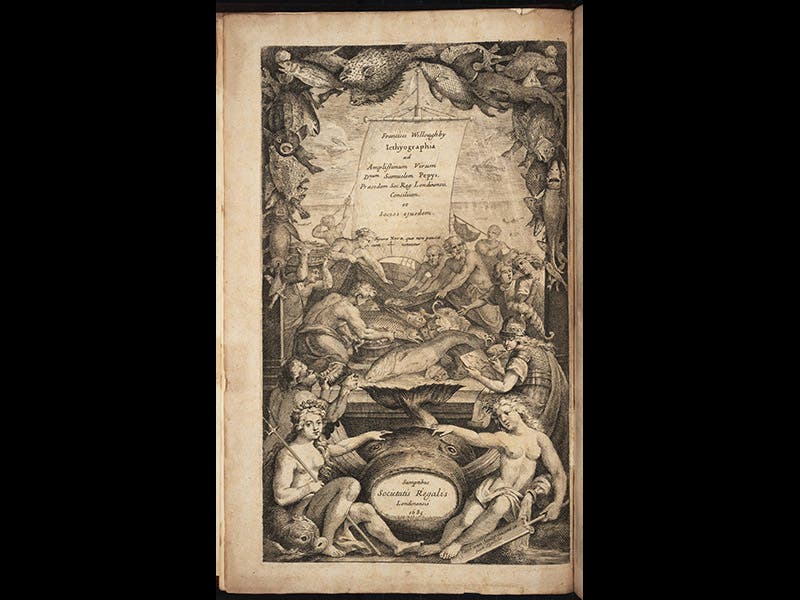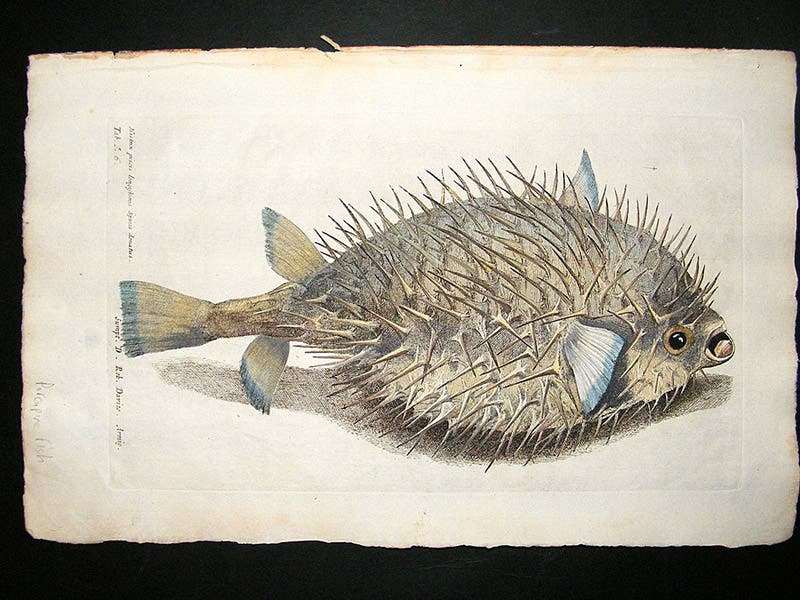Scientist of the Day - Francis Willughby
Francis Willughby, an English naturalist, was born Nov. 22, 1635. Willughby studied under John Ray at Cambridge, and when Ray was removed from his teaching position for refusing to take the Oath of Uniformity in 1662, Willughby and Ray embarked on a three year tour of the Continent. Upon returning home in 1666, they resolved to write a natural history encyclopedia, with Willughby concentrating on animals and Ray undertaking the botanical side, and Ray moved into Willughby’s manor house, Middleton Hall, in Warwickshire. Unfortunately, Willughby died suddenly in 1672, at age 36, and Ray took it upon himself to ready Willughby's unfinished volumes for printing before publishing his own botanical work. Willughby's Ornithologiae appeared in 1676, and his De historia piscium (History of Fish) was published ten years later, in 1686 (Willughby had not even begun the volumes on mammals and reptiles).
For the illustrations in the bird volume, Ray used whatever he could find or were supplied by correspondents; the hoopoe is quite handsome (first and fourth image), as is the standing loon (second image); the horizontal loon was taken from Ole Worm’s museum book, and the dead razor-billed auk and guillemot (third image) were supplied by Thomas Browne, who refused to pretend the birds being drawn were still alive.
The History of Fish is somewhat notorious because it was a very expensive publication, with many large copper plates, and the coffers of the Royal Society treasury were emptied by its production. And since the book sold very poorly, the coffers remained empty. So when, later that year, Edmond Halley came to the officers of the Society with a request to finance what he thought would be an important book, he was turned away. The book was Isaac Newton's Principia. Fortunately, Halley himself agreed to pay for the publication of Newton’s great work, and Willughby's De historia piscium was not forever cursed as the book that killed the gold-bearing goose. We have both of Willughby's posthumous volumes in the History of Science Collection. The engraved title page from the History of Fish (fifth image) is from the copy in our collection, but as our plates have not been digitized, the porcupine fish is from another copy (sixth image).
Dr. William B. Ashworth, Jr., Consultant for the History of Science, Linda Hall Library and Associate Professor, Department of History, University of Missouri-Kansas City. Comments or corrections are welcome; please direct to ashworthw@umkc.edu.

